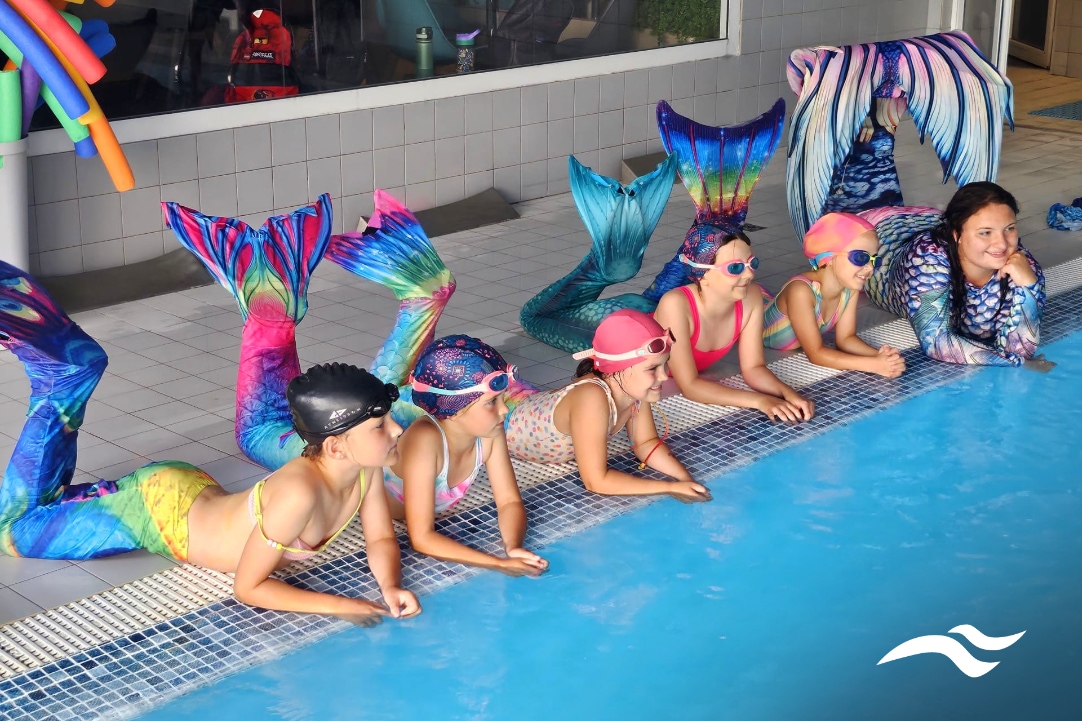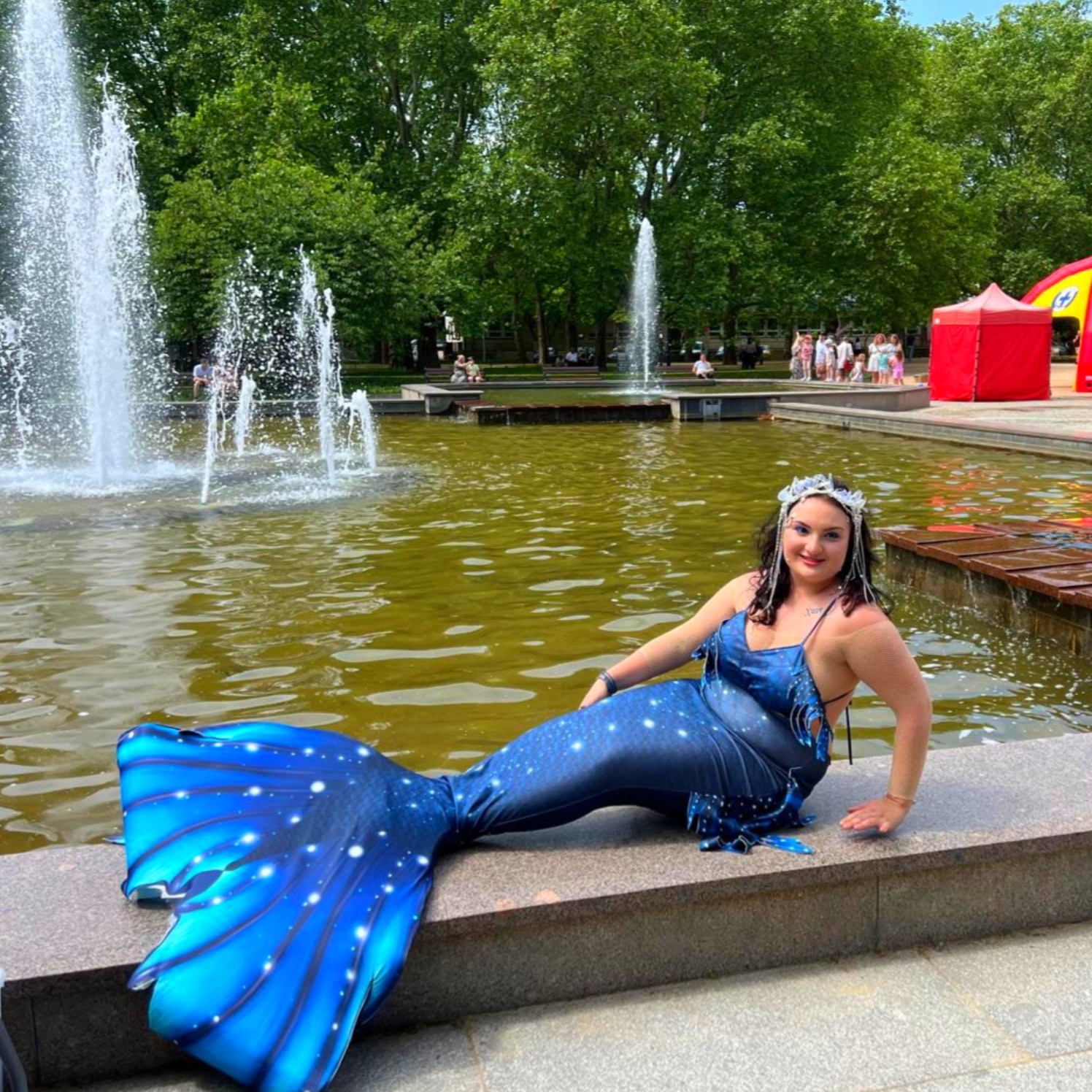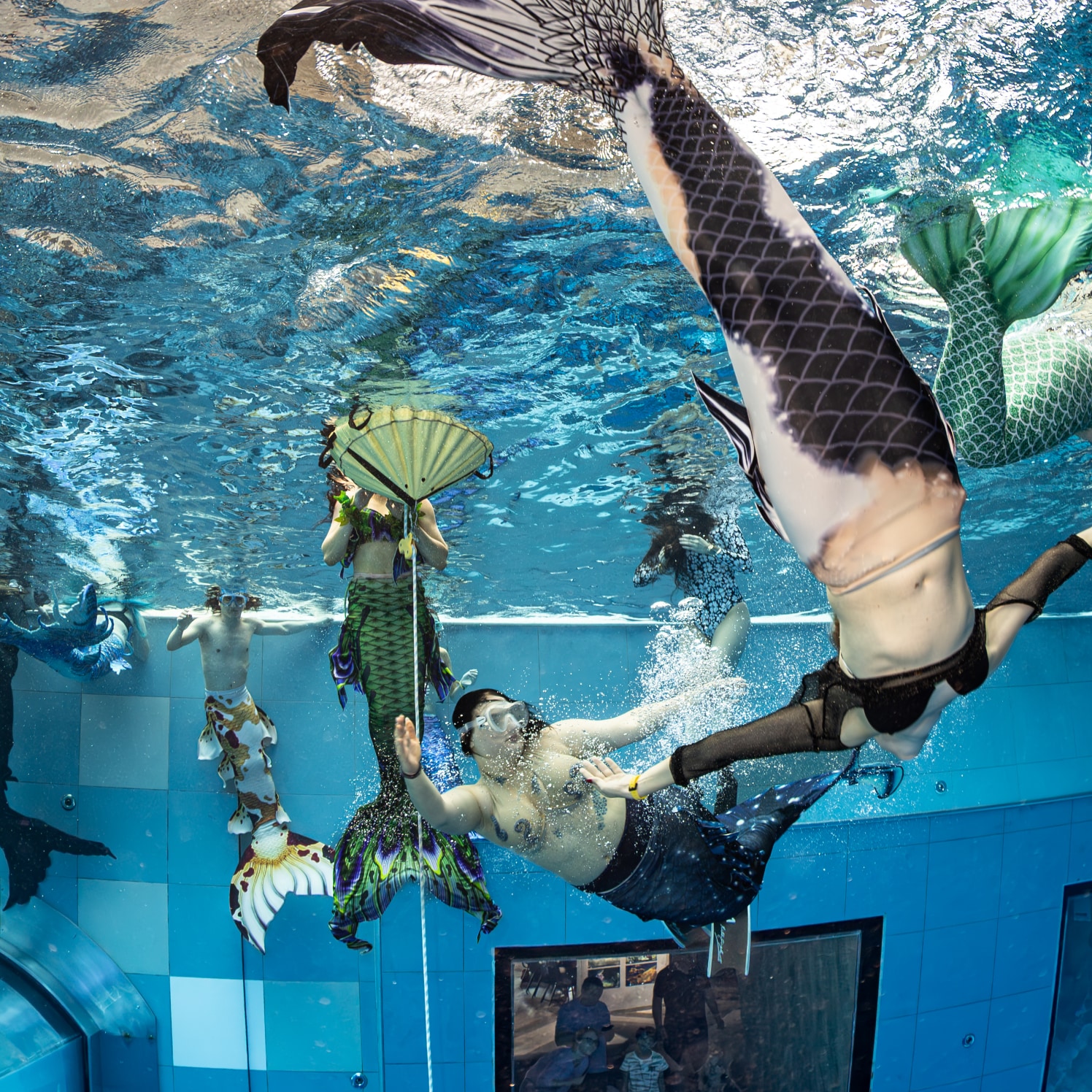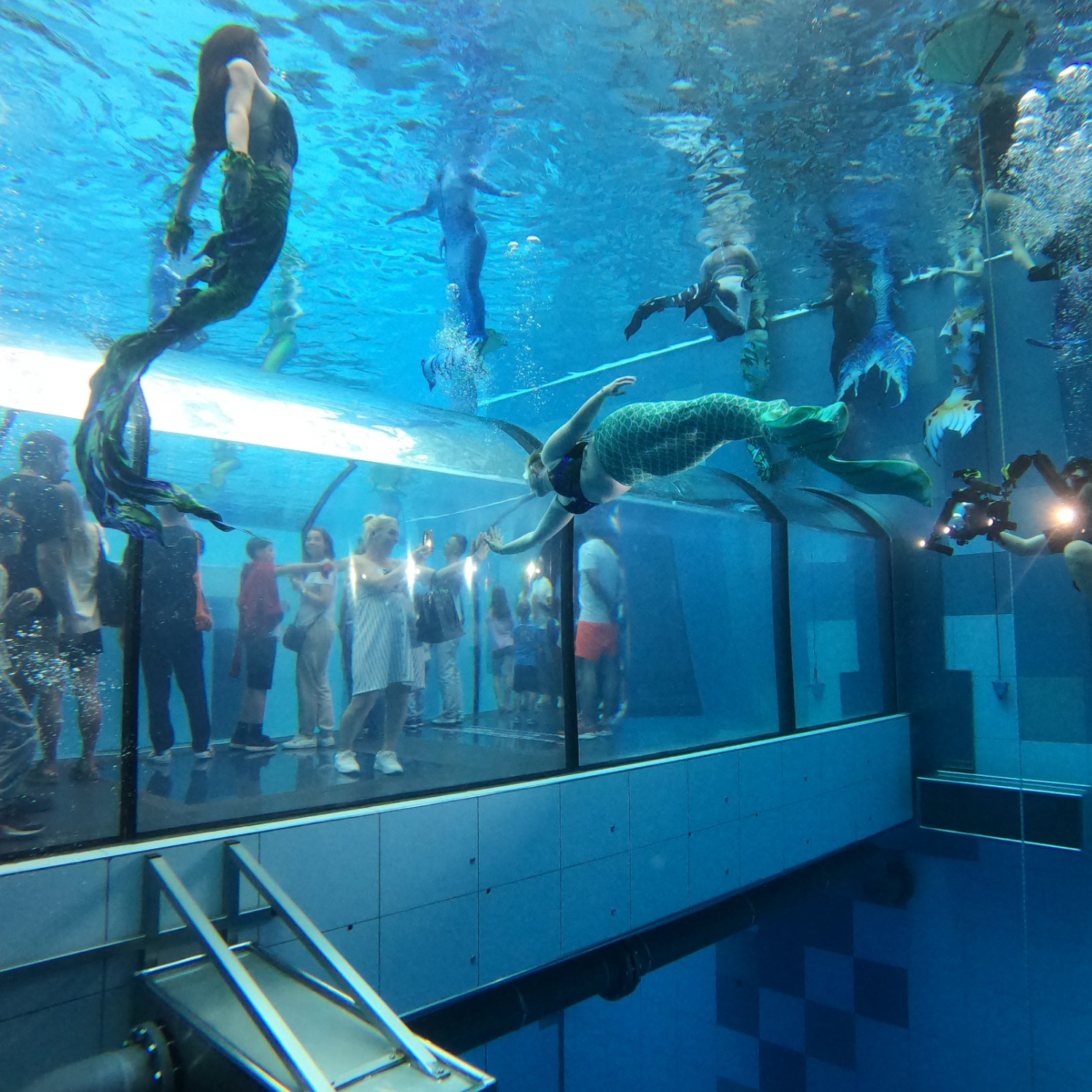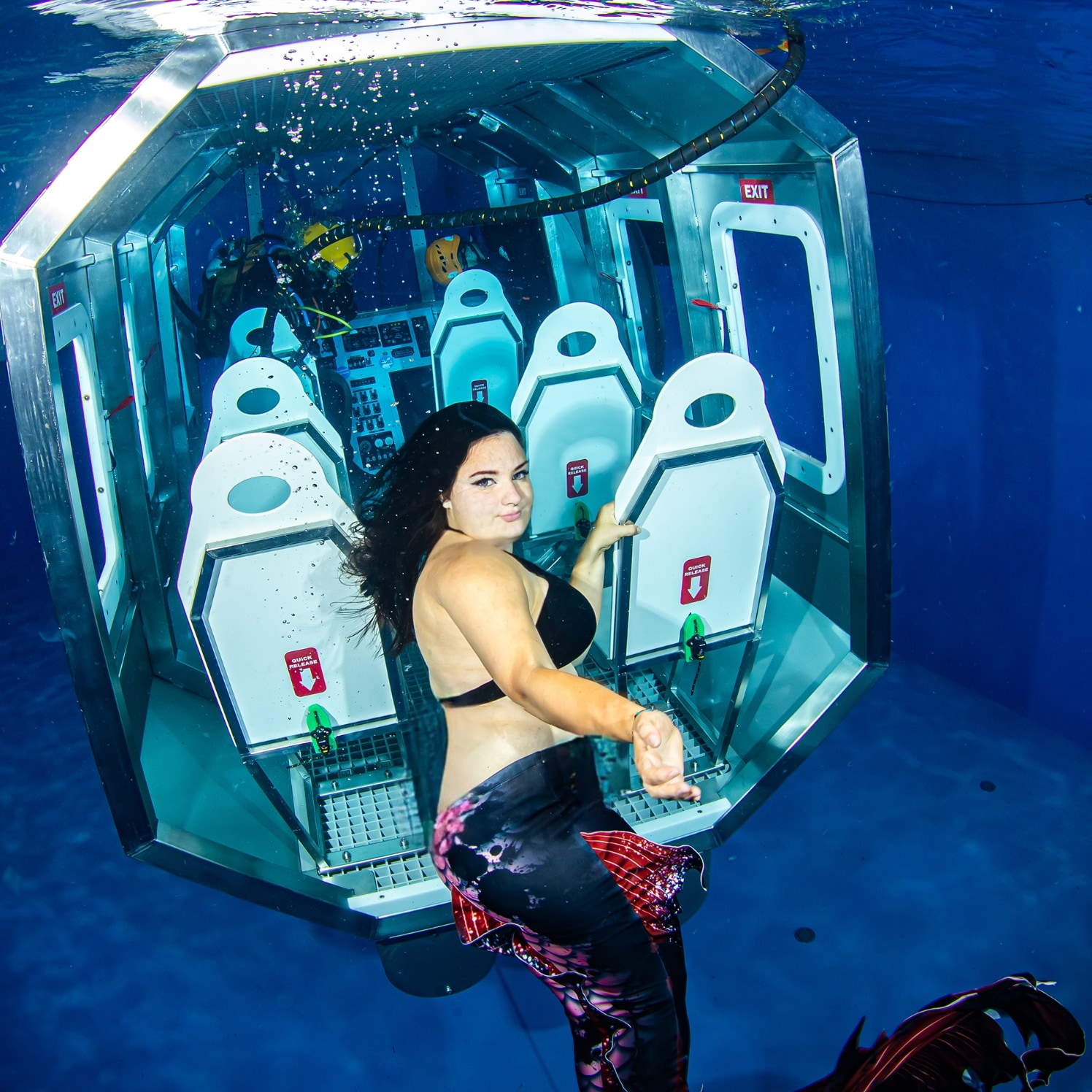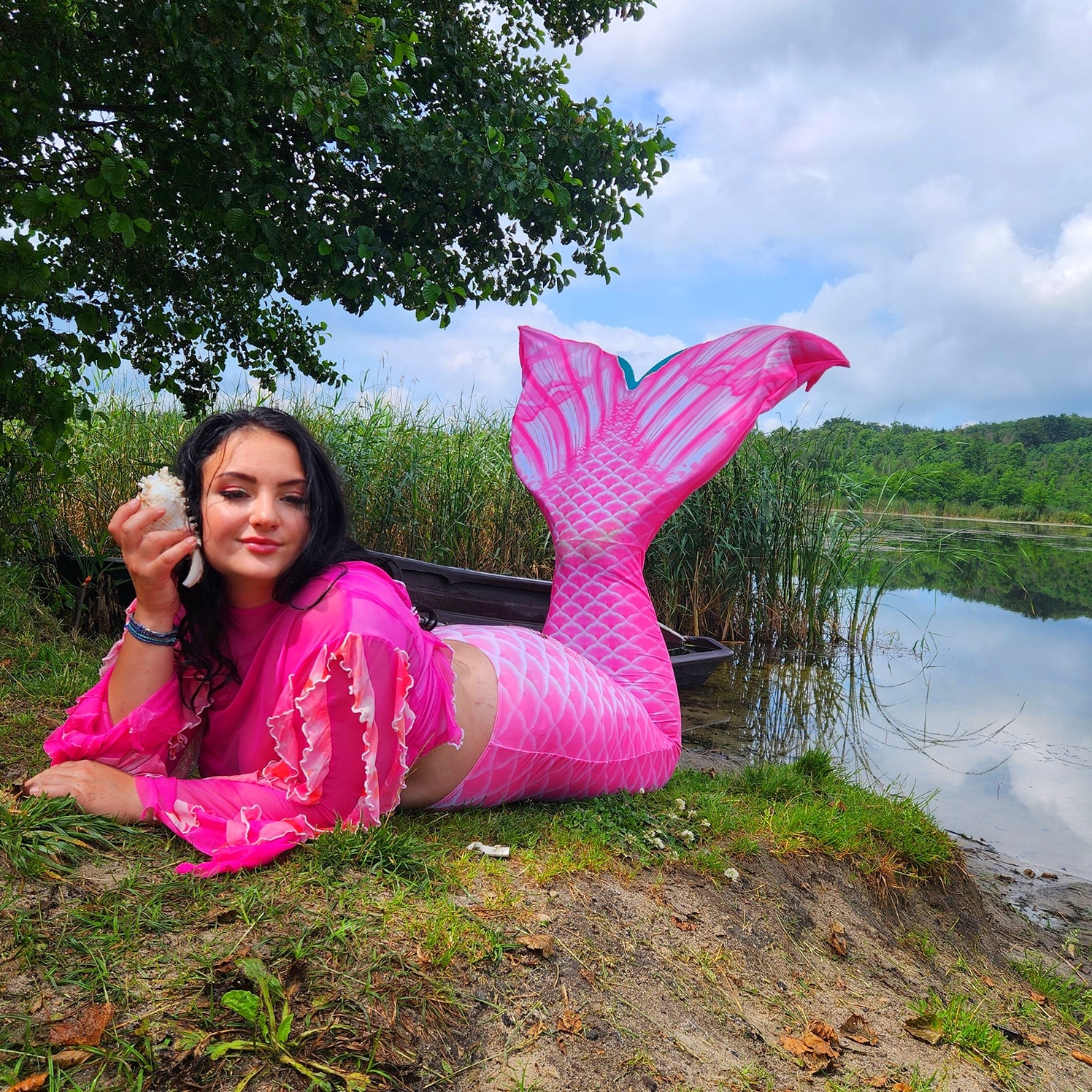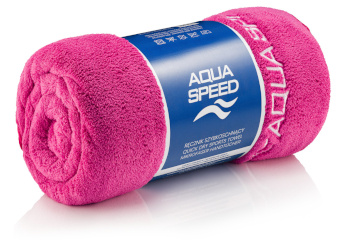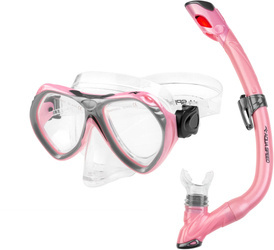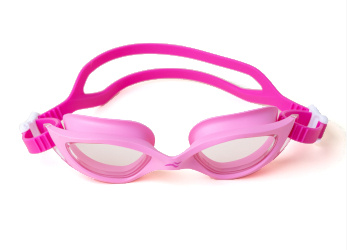Swimming with a mermaid tail is a growing trend. It’s not just a sport or a form of physical activity – it’s an art practised by more and more girls, and not only girls. Kinga Domarecka – of Szczecińskie Syrenki – tells us what is so fascinating and magical about mermaiding.
Mermaiding – an art that combines many sports
Is swimming with a mermaid tail a form of fun, a passion, or a sport?
I think it’s a bit of everything. Some people swim to fulfil their childhood dreams – some girls focus only on the aesthetic side of mermaiding, while others do it for their health. For me, mermaiding is above all a passion that combines many sports. First of all, you need to be a very confident swimmer, because inside that mermaid tail there is a monofin (which many people don’t realise!).
Other sports that make up mermaiding are freediving (breath-hold diving) and artistic swimming. As mermaids we not only have to be able to cope well at depth, but also look as if it’s no effort at all. Mermaiding training focuses on improving swimming technique, especially the butterfly stroke, as well as honing breath control, equalising pressure and coordinating movements.
Mermaiding – a new underwater sport
Freediving and monofin swimming are developing in Poland – where does mermaiding fit into this trend?
In Poland, mermaiding is a relatively new sport, as it was introduced in 2018. It came to us from Asia, where it developed very quickly. Since then, the country’s largest mermaid school has been operating – the Mermaid Academy in Warsaw. Over these 7 years of mermaiding in Poland, more than half a thousand mermaids have completed courses. In addition, 60 mermaid instructors have been trained.
Mermaiding fits perfectly into the current growth of freediving. As I mentioned earlier, in this discipline key roles are played by breath control, equalising pressure and swimming with a monofin – which is very different from a freediving monofin in terms of weight, material and even shape. Nevertheless, these are shared elements in both sports. It’s also worth emphasising that freediving and mermaiding use the same infrastructure – especially through the Deepspot facility, the deepest pool in Europe. It’s worth adding that both sports are grouped under the SSI (Scuba Schools International) diving federation.
For many mermaids, mermaiding was the gateway to starting their freediving journey. Thanks to it, they were able to extend the time they can stay underwater while training for competitions or shows.
Swimming with a mermaid tail – an activity for everyone?
I can see a strong artistic element in this activity. A bit of artistic swimming, a bit of design… Who is this activity for?
In fact, for everyone! For children, adults – for anyone who wants to work on their fitness in an interesting way or fulfil a childhood dream. I definitely recommend mermaiding to creative people. You need finesse in the water and the ability to think quickly – something we saw at competitions such as the Polish and international Merlympics, where participants had to face staged rescue and artistic events, for example a contest for the best underwater photo.
At such competitions, not only the sporting aspects are judged, but also the visual ones. The participants’ costumes are often made by themselves. I think this sport will appeal to anyone who has done any kind of handicraft at some stage in their life. In the artistic side of mermaiding, a lot depends on us and on the “mersona” – mermaid persona – we create for ourselves. On top of that comes building the story of a given mermaid or merman, making costume accessories, makeup, and increasingly full silicone tails.
At what age can you start swimming with a mermaid tail?
Is mermaiding only for girls? From what age can you start and where can you train?
Mermaiding is often associated with classes for girls, but it’s a sport absolutely for everyone, regardless of gender or age. Men tend to gravitate more towards the sporting aspect of mermaiding, often choosing to begin their adventure as mermen – the male version of a mermaid – to work on their butterfly technique or breath-holding. I’d like to proudly mention that mermaiding is a passion I also share at home – my partner also trains this unique form of activity. I warmly invite all gentlemen, because among so many mermaids you can truly feel like Poseidon, king of the seas!
According to SSI standards, you can start as early as 6 years old – all you need is the ability to swim 12 m without buoyancy aids. At the moment, mermaiding schools have developed across all regions of Poland. They often operate in big cities, offering training for younger children at sport pools.
Adults often choose to train at Deepspot as well, since it’s an attractive location with excellent freediving infrastructure, which is necessary for the most advanced mermaiding courses, where a depth of 5 m is required.
I’m delighted to be opening the first mermaid school in Western Pomerania under the name “Szczecińskie Syrenki” (“Szczecin Mermaids”).
Mermaiding – a social activity
What does this form of physical activity give you? Is it something for individualists, or rather for people who want to be part of a community?
I think what attracts the greatest number of people to mermaiding is precisely the community – an amazing group of people, women and men with all kinds of talents that they love to share in order to help one another. Above all, it’s worth emphasising that this is a very unusual sport, and the mermaiding community in Poland is extremely open.
As this year’s Mermaid Olympics in Wolfsburg also showed us, teamwork plays a huge role. During the instructor course I heard from Magdalena Gębicka, the person who brought this sport to Poland, that “swimming in a group is a hundred times more fun than individual courses.”
Because community is so important in Poland, regular mermaid meet-ups are organised at Deepspot, which I mentioned earlier. As many as 40 mermaids can show up for such an event to swim together at the same time. I can definitely recommend this sight to every fantasy enthusiast!
Mermaiding – a profession of the future?
How are you developing in mermaiding? Is it just an adventure, or something more? Where do you see yourself with this activity in a few years’ time?
At first, mermaiding was just entertainment, because on a daily basis I work as a swimming instructor. Last year I bought a second tail and started using it as a form of reward and fun during swimming lessons. That’s when I realised that everyone has, at some point, wanted to try what it’s like to be a mermaid. Since then, I’ve run dozens of workshops in many swim schools, at day camps and holiday camps. My tail collection has grown, and I’ve become a certified mermaiding instructor. I can proudly say that this passion will stay with me for life.
Starting in September, I’m inviting you to the first mermaiding courses at my school “Szczecińskie Syrenki” (“Szczecin Mermaids”).
Interview by: Maciej Mazerant / Managing Editor of AQUA SPEED Magazine
Photo: Rafał Opaluch
Photos courtesy of Kinga Domarecka

